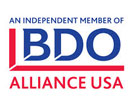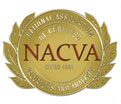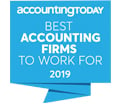Contingent liabilities reflect amounts that your business might owe if a specific “triggering” event happens in the future. Sometimes companies are unclear when they’re required to report a contingent liability on their financial statements under U.S. Generally Accepted Accounting Principles (GAAP). Here are the basics.
Before you jump headfirst into the year-end financial reporting process, review the role independent audit committees play in providing investors and markets with high-quality, reliable financial information.
Posted in Audit & Assurance
Employee Benefit Plans: Do You Need a Form 5500 Audit?

Posted by Aaron K. Waller, CPA on Jan 13, 2020
Some benefit plans are required to include an opinion from an independent qualified public accountant (IQPA) when filing Form 5500 each year. The IQPA examines the plan’s financial statements and schedules to ensure they’re presented fairly and in conformity with Generally Accepted Accounting Principles (GAAP). The financial statements and IQPA opinion are often referred to collectively as the “audit report.”
Posted in Audit & Assurance
The Financial Accounting Standards Board (FASB) hasn’t issued any major new accounting rules in 2019. But there have been some important developments to be aware of when preparing annual financial statements under U.S. Generally Accepted Accounting Principles (GAAP).
Posted in Audit & Assurance
Risk Assessment: A Critical Part of the Audit Process

Posted by Aaron K. Waller, CPA on Dec 16, 2019
Audit season is right around the corner for calendar-year entities. Here’s what your auditor is doing behind the scenes to prepare — and how you can help facilitate the audit planning process.
Posted in Audit & Assurance
The use of so-called “profits interest” awards as a tool to attract and retain skilled workers has increased, as more companies are being structured as limited liability companies (LLCs), rather than as corporations. But accounting complexity has caused some private companies to shy away from these arrangements. Fortunately, relief from the Financial Accounting Standards Board (FASB) may be coming soon.
Posted in Audit & Assurance
Whether it’s hard hats and drills on a job-site, iPads in an office or RFID readers in a warehouse, small tools and equipment have a tendency to disappear at many companies. The cost of lost, damaged and stolen items can quickly add up, consuming profits and cash flow. What can you do to manage these items more effectively and create accountability among workers?
Posted in Audit & Assurance
In financial reporting, investors and business owners tend to focus on four key metrics: 1) revenue, 2) net income, 3) total assets and 4) net worth. But, when it comes to gauging short-term financial performance and creditworthiness, the trump card is cash flow.
Posted in Audit & Assurance
Internal Audit 2.0: Paperless and Continuous Auditing Trends

Posted by Aaron K. Waller, CPA on Oct 09, 2019
Technology is altering the traditional approach to internal audits. Instead of reviewing reams of paperwork, today’s auditor is learning to use electronic records. In turn, going paperless facilitates a concept known as “continuous auditing,” where internal auditors continually gather data to support their procedures. Here’s how your business can modernize this process.
Posted in Audit & Assurance
Every year, research firm Audit Analytics publishes a study about financial restatement trends. In 2018, the number of public companies that amended their annual reports increased by 18%.
Posted in Audit & Assurance



















